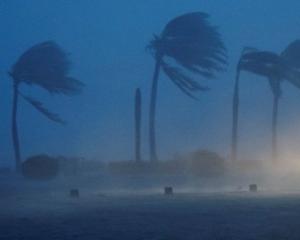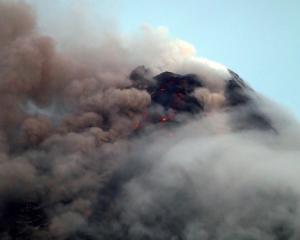
Mangkhut entered the Philippines as a super typhoon in the early hours, and sent winds and rains across the entire main island of Luzon, home to about half the country's 105 million people.
Known locally as Ompong, Typhoon Mangkhut at one point had maximum gusts of 305 kph (190 mph) before it exited the land area before noon and moved towards southern China and Vietnam with reduced wind speeds of 170 kph (106 mph).
Two rescue workers were killed while trying to free people trapped in a landslide in the mountainous Cordillera region, said Ricardo Jalad, head of the nation's disaster agency. No further details were provided. Police also said a body had been found in a river in Manila.
Philippine state weather agency PAGASA downgraded the domestic threat level, but warned the danger was far from over, with continued storm surges and heavy rains that could trigger floods and more landslides.
"We are asking the people to remain alert and continue taking precautions," said PAGASA meteorologist Rene Paciente.
Rapid response teams were on stand by with the air force for search and rescue missions as authorities undertook damage assessments in areas in the path of the storm, which felled trees, electricity poles and tore off shop signs and sheet metal roofs hundreds of kilometres away.
There was flooding in several provinces and parts of the capital Manila. Authorities were preparing to release water from several dams, fearing constant rains could push reservoirs to dangerously high levels.

The typhoon's peak winds were stronger than those of Hurricane Florence, which killed five people in the United States after it piled into the Carolinas knocking down trees, and gorging rivers and causing major power outages before it was downgraded to a tropical storm.
STORM SURGE WARNINGS
Some 105,000 people were staying in temporary shelters after mass evacuation of coastal areas of the Philippines following major storm surge warnings.
Authorities in some areas of northern Luzon turned off power as a precaution, and said some residents in high-risk areas chose to ride out the storm to protect homes from looters.
More than 1,000 houses were impacted in Cagayan province, where the storm first made landfall, with authorities in the town of Baggao saying they had lost contact with an emergency response team, said Defence Secretary Delfin Lorenzana.
Rogelio Sending, a government official in Cagayan said there were province-wide power and communication outages and reports of uprooted trees blocking roads.
"This makes the clearing operations really difficult," he said by phone.
The Philippines is still haunted by the devastation of Typhoon Haiyan, which killed more than 6,300 people in central areas of the country in 2013, most due to huge storm surges.
But authorities say they were better prepared this time in terms of evacuating and informing high-risk communities.
"I talked to the president last night. His clear and concise marching order was 'Save lives, save lives,'" said Francis Tolentino, the government's disaster response coordinator and adviser to Philippine President Rodrigo Duterte.
Renato Solidum, a senior official at the Science and Technology department, said people in northern Luzon experienced a super typhoon in 2016 and were not caught off guard.
"There has been an aggressive information dissemination to prepare well," he said.
"Because the people had experienced a super typhoon only recently, they really had imagination about what happened before and that they really need to be prepared."













